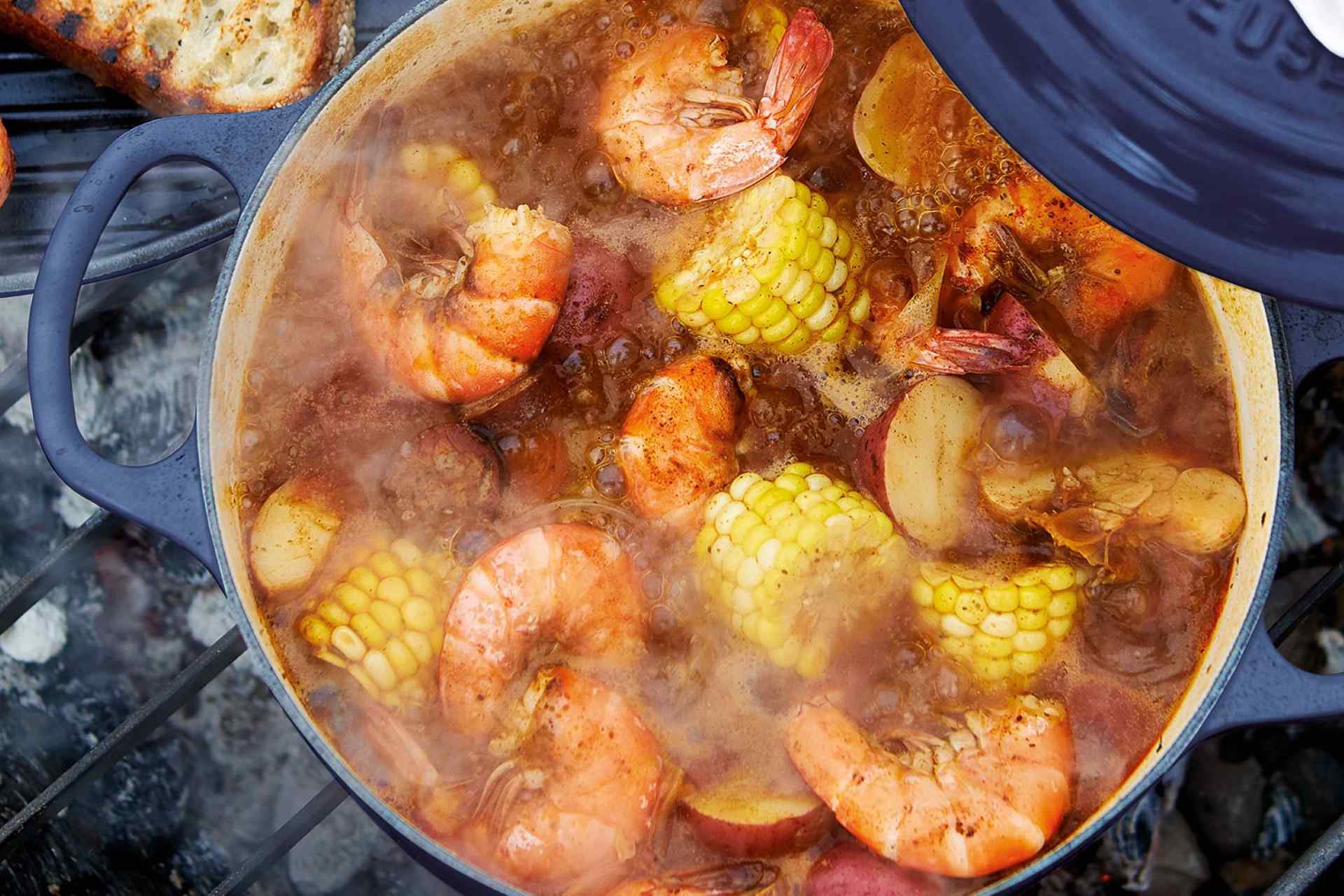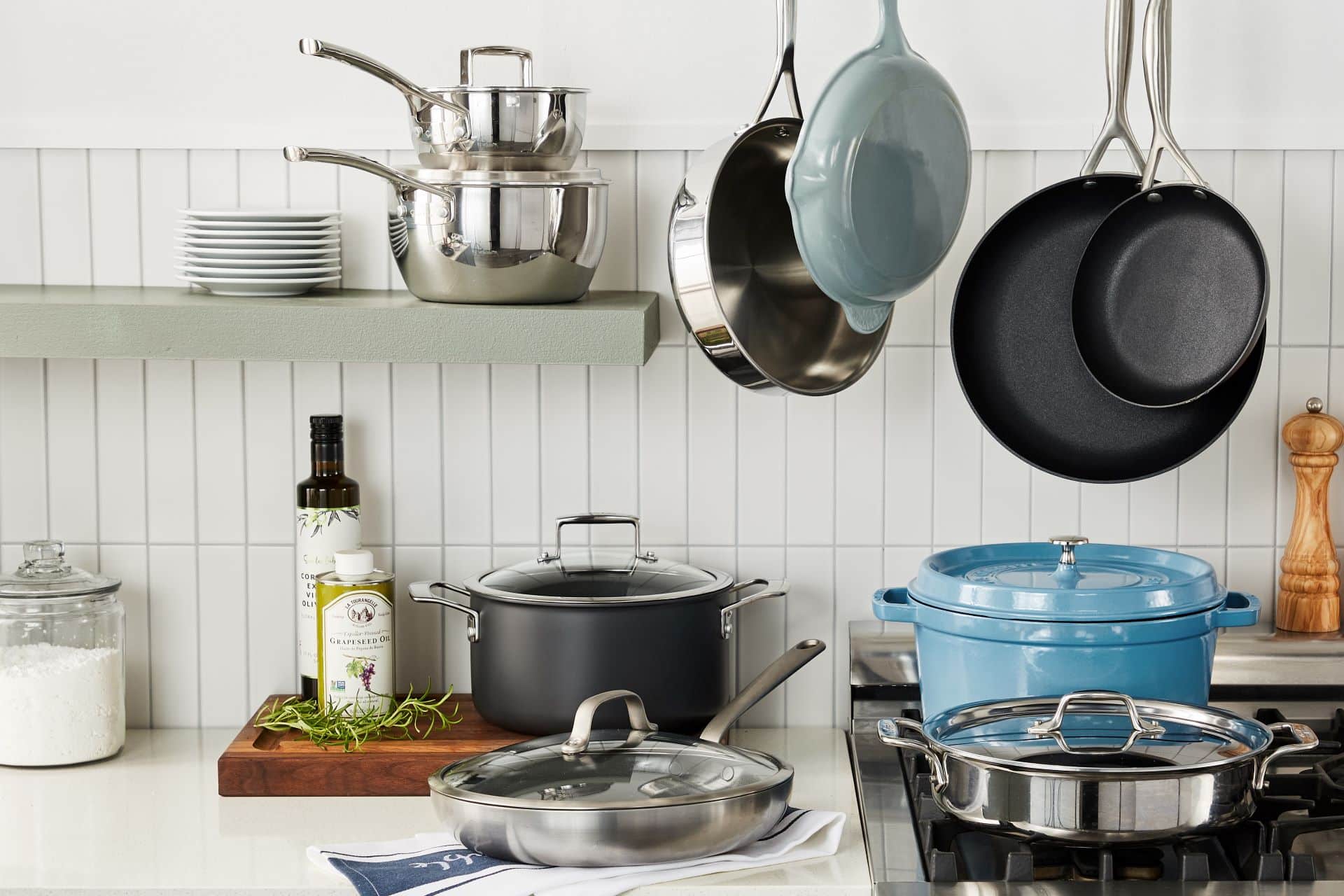A down-home kind of summer.


Whether you’re outfitting a new home or decluttering your well-stocked kitchen, it can be hard to decide which cookware you really need.
And sure, you could go out and buy a coordinated cookware set complete with every pot, pan and lid, but—as our chefs will tell you—that’s not always the best option.
Different types of cookware and materials work for different kinds of recipes—you wouldn’t try to sear chicken thighs in a stockpot, just like you wouldn’t try to make a stew in a cast iron skillet. Instead, you want to choose high-quality pieces that are not only great at what they’re designed for but will last for years to come.
In this post, we’re breaking down 8 of the most essential cookware pieces every kitchen needs, including our top picks for each. Check it out below.
Hungry for more? Explore our selection of high quality cookware to complete your kitchen!
Ah, the humble cast iron skillet.
Found in kitchens all across America, the cast iron skillet is our chefs’ “go-to” for searing a steak, fry up some bacon or cook up some corn bread.
Not only are cast iron skillets incredibly durable, they’re also exceedingly versatile. An excellent conductor of heat, cast iron cookware distributes heat evenly and is ideal for a variety of methods, including the broiler, which is key for recipes that call for finishing a dish in the oven.
The one caveat? Raw cast iron skillets (non-enameled) do take a bit of care compared to other materials. They can rust easily, so they need to be dried immediately and coated with vegetable oil to prevent corrosion. Cast iron also requires a seasoning—a layer of baked on oil that creates the easy-release, nonstick surface—to be fully nonstick.
Our Pick: Staub Traditional Skillet, 11″
Dutch ovens are the workhorse of the kitchen. They can braise, sear, stew and bake, and they can go from stovetop to oven without a second thought.
Look for a Dutch oven made from enameled cast iron. The cast iron makes it heavy enough to heat food evenly and efficiently, while the enameled coating acts as a nonstick surface. Not only is this easier to maintain than traditional cast iron, but it’s also non-reactive—meaning it won’t react with acidic or alkaline foods, like tomatoes or vinegars.
You’ll also want one that’s large enough to handle a variety of dishes—from breads and stews to roasts and chicken—so look for one that’s 5 quarts or larger. A high-quality Dutch oven also comes with a tight, well-fitting lid. This helps lock in moisture and steam while cooking, which keeps food from drying out during long cooking times that are required for some dishes, like Beef Bourguignon.
Unlike a skillet, a sauté pan has tall sides set at a right angle. This gives the pan a larger surface area, prevents splattering and offers plenty of volume for cooking larger dishes.
Sauté pans also have tight-fitting lids (similar to a Dutch oven) that help to lock in moisture for slow-cooked dishes, like this Braised Chicken with Tomatoes and Olives.
Stainless steel is a great material to look for when choosing a sauté pan. That’s because stainless steel is an excellent heat conductor, spreading heat evenly and quickly, making it ideal for high heat tasks like searing and sautéing.
Our Pick: Martha by Martha Stewart Tri-ply Stainless Steel Sauté Pan with Lid, 3.5 Qt.
Also known as a “saucier,” a saucepan is great for making, well, sauces!
But it’ll do so much more than that! It’s also ideal for whipping up small batches of soups, gravies or grain-based dishes, like this Creamy Grits with Roasted Parmesan and Poblano.
While saucepans come in a variety of sizes, aim for one with a 3–4-qt. volume. This will be big enough to heat up a few servings of soup or reduce a few bottles of wine down to a few cups. It’s up to you if you want to choose a nonstick or a stainless steel saucepan, but there are a few things to consider:
Sure, if your cast iron is well-seasoned, then technically it’s nonstick. But, for those of us who haven’t mastered the art of cast iron cooking, a true nonstick skillet may be the best tool in your arsenal.
Depending on the brand, nonstick pans are typically coated with a ceramic (which is naturally nonstick) or chemical nonstick coating (look for ones made without PFOAs) that keeps food from sticking to the pan’s surface. This is ideal for more delicate dishes, like scrambled eggs, or salmon.
You can maximize the lifespan of your nonstick by avoiding metal utensils, very high heat, harsh sponges when washing and stacking them during storage. And while many nonstick skillets are oven- and -induction-safe, always be sure to check the manufacturer’s recommendations.
Our Pick: Scanpan CS+ Skillet, 8″, 11″ or 12.5″
Next to the Dutch oven, a stainless steel skillet is probably the most versatile piece of cookware you could own.
Sure, you won’t be simmering any soups or braising any meats, but when it comes to pan sauces or seared meats and fish, this is the pan for you. It’ll even work for stir-fries if you don’t have room in your kitchen (or budget) for a wok.
The difference between the skillet and the sauté pan is the shape and height of the sides. While a sauté pan can handle a larger volume of food, the skillet is ideal for quick, high heat cooking where lots of tossing and stirring is involved.
Our Pick: All-Clad D3 Stainless Steel Skillet with Lid, 10″ or 12″
If you own a grill, this one might seem unnecessary. However, grill pans do a lot more than just cook burgers.
From grilled veggies and kebabs to chicken and even fruit, a grill pan is versatile, durable and a great option if you don’t have the outdoor space for a grill. Because they’re meant to be used on the stove, you’ll get that “summer cookout” flavor all year round.
Find one that’s reversible and comes with a flat griddle on one side and raised grates on the other. This will allow you to not only grill meats and veggies, but the flat side can also be used to make pancakes, grilled cheese or French toast.
Our Pick: Lodge Reversible Grill & Griddle Pan
Soup season may only last a few months, but trust us, you’ll get plenty of use out of your stockpot year-round. From homemade stocks to broths and ample amounts of pasta, don’t be surprised if you pull this one out of the cabinet frequently.
Unlike the Dutch oven, you won’t be searing, braising or sautéing in your stockpot, so heat distribution isn’t as big of a concern. You’ll want to look for one that’s big enough to cook large quantities of liquid, thick enough that it won’t burn whatever is resting on the bottom (think soups and stews) and durable enough to stand up to years of heavy lifting.
Our Pick: Cuisinart Chef’s Classic™ Stainless Steel Stockpot with Cover
Hungry for more? Explore our selection of high quality cookware to complete your kitchen!
Join The Conversation